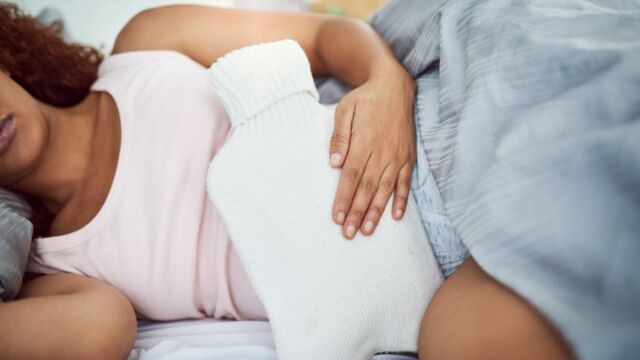Many of us are innately familiar withperiod cramps and will embrace menstruation fully equipped with chocolate, painkillers and a wheat bag. This cramping pain resonates in our stomachs, lower backs and upper thighs and can sometimes be enough to confine us to our beds.
Discover our latest podcast
But what are period cramps, and why are so many of us set to suffer from them?
What are period cramps?
The medical name for period cramps is dysmenorrhea. This painful cramping usually happens in the first few days of menstruation and is caused by prostaglandins.
Having your period generally means you aren’t pregnant. During this time, the uterus sheds the endometrium and the unfertilised egg that it spent the previous weeks preparing. Prostaglandins are an active lipid in the body that can cause the contraction of the uterus during your period, which helps this shedding process take place.
Prostaglandin levels differ from person to person. People with higher levels of these lipids are more likely to have more intense cramps compared to those with lower levels. Prostaglandin levels also level off as your period ends, explaining why menstrual cramps are at their worst in the days leading up to and the first few days of your period. These cramps can feel like a poking or stabbing pain, an aching feeling or even a stomach ache.
Period cramps are also more likely to decrease with age and after childbirth. In the meantime, there are many things you can do to soothe the pain, like take an Epsom salt bath or even have an orgasm.
Those who are more likely to experience period cramps include:
- People who are under 25
- People who started puberty at an early age (around 11)
- People prone to having a heavy flow
- People who have irregular periods
- People who have a family history of period cramps
A symptom of a larger problem
While period cramps are usually just a sign that your body is working well to shed the endometrium, pain that prevents you from living your day to day life can be a sign of an underlying health issue. Intense period cramps can be a sign of:
Polycystic ovarian syndrome (PCOS)
PCOS is an endocrine condition that can cause cysts to form on the ovaries.
Endometriosis
Endometriosis is when the lining of the uterus implants on the outside, usually on the ovaries, fallopian tubes or pelvic tissue.
Adenomyosis
When the tissue lining the uterus starts to grow into the uterine wall.
Uterine fibroids
Growths in the wall of the uterus. Uterine fibroids are usually non-cancerous but can be painful.
Pelvic inflammatory disease
An inflammatory infection often caused by sexually transmitted bacteria.
Cervical stenosis
Cervical stenosis is when the opening of the cervix is so tiny it impedes the menstrual flow. This can cause a feeling of pressure in the uterus.
When to see a doctor
Period cramps are a normal part of life. However, if they are so painful that you can’t leave the bed or are over 25 and suddenly experience intense period pain, then it is a good idea to consult your doctor.
Downloading a period tracking app to record both when you have your period and any symptoms you may be having can also help medical professionals to narrow down any problems.















